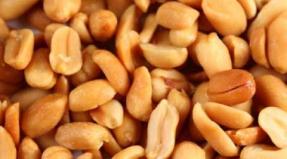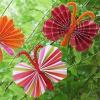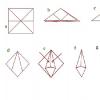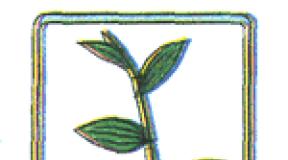Type of feeding of heterotrophs. Classification of organisms by the way they eat and receive energy. Definitions of heterotrophs in the scientific literature
According to the way of feeding, living organisms can be divided into two large groups: autotrophs and heterotrophs.
Autotrophs
Autotrophs (from the Greek words autos - self and trophe - food) are living organisms that synthesize organic compounds from inorganic ones. Autotrophs make up the first tier in the food pyramid (the first links in the food chain). They are the primary producers of organic matter in the biosphere, providing food for heterotrophs. It should be noted that sometimes a sharp boundary between autotrophs and heterotrophs cannot be drawn. For example, the unicellular euglena is an autotroph in the light, and a heterotroph in the dark. Autotrophs are divided into phototrophs and chemotrophs.
Phototrophs
Organisms that use sunlight as a source of energy are called phototrophs. This type of nutrition is called photosynthesis.
Chemotrophs
Other organisms use the energy of chemical bonds of food or reduced inorganic compounds, such as hydrogen sulfide, methane, sulfur, ferrous iron, etc., as an external source of energy. Such organisms are called chemotrophs. All eukaryotic phototrophs are simultaneously autotrophs, and all eukaryotic chemotrophs are heterotrophs. Other combinations are found among prokaryotes. So, there are chemoautotrophic bacteria, and some phototrophic bacteria are heterotrophs.
Heterotrophs
Mixotrophs
Some organisms (for example, carnivorous plants) combine the features of both autotrophs and heterotrophs. Such organisms are called mixotrophs. Some sources consider the term "mixotrophy" to be incorrect, since the same Venus flytrap catches flies to obtain nitrogen, and receives food through photosynthesis.
Lithotrophs and organotrophs
This classification is based on the division of organisms into donors (sources) of electrons, which are necessary for many cellular processes. Lithotrophs are organisms for which inorganic substances are electron donors. Organotrophs are organisms for which organic compounds are sources of electrons.
General
Organisms receive energy directly in the form of ATP molecules during cellular respiration, a process that takes place in mitochondria, glycolysis and photosynthesis. Breathing is of two types: aerobic, in which oxygen is necessarily involved (glucose is oxidized by it) and anaerobic (consists of two processes: glycolysis and alcoholic or lactic acid fermentation).
see also
Wikimedia Foundation. 2010.
See what "Classification of organisms by the way of nutrition and energy production" is in other dictionaries:
Contents 1 Autotrophs 1.1 Phototrophs 1.2 Chemotrophs 2 Heterotrophs ... Wikipedia
I Medicine Medicine is a system of scientific knowledge and practical activity, the goals of which are strengthening and maintaining health, prolonging human life, preventing and treating human diseases. To accomplish these tasks, M. studies the structure and ... ... Medical encyclopedia
Halobacteria, strain NRC 1, each cell is about 5 microns in length ... Wikipedia Glossary of terms of normative and technical documentation
Information - (Information) Information is information about something Concept and types of information, transmission and processing, retrieval and storage of information Contents \u003e\u003e\u003e\u003e\u003e\u003e\u003e\u003e\u003e\u003e\u003e\u003e ... Investor encyclopedia
Terminology 1:: dw Day of the week number. "1" corresponds to Monday. Definitions of the term from different documents: dw DUT Difference between UTC and UTC, expressed as an integer number of hours. Definitions of term from ... ... Dictionary-reference book of terms of normative and technical documentation
To designate such organisms, other terms are sometimes used, meaning, however, the same - saprophytes (saprophytic nutrition) and saprobionts (saprobiont nutrition). Many fungi and bacteria are saprotrophs, such as Mucor, Rhizppus and yeast. For digestion, saprotrophs secrete enzymes into food, and then absorb and assimilate the products of this extracellular digestion.
Saprotrophs destroy organic residues by decomposing them. Many of the resulting simple substances are not used by the saprotrophs themselves, so they are fed to plants. Consequently, the activity of saprophytes provides very important connections between the cycles of biogenic elements, making it possible to return these elements to living organisms.
The third group of heterotrophs - holozoans... Holozoan nutrition includes three stages: eating, digesting, and absorbing digested substances. It is more often observed in multicellular animals with a digestive system.

Holozoic feeding animals can be divided into carnivores, herbivorous and omnivores.
However, the ways of transforming the food into a form that is convenient for assimilation are similar in many organisms and consist of the following processes:
- Swallowingwhich provides food capture.
- Digestion - This is the splitting of large organic molecules into smaller and more easily soluble in water. Digestion can be divided into two stages. Mechanical digestion, or mechanical destruction of food, such as teeth. Chemical digestion is digestion with enzymes. The reactions that carry out chemical digestion are called hydrolytic reactions. Digestion can be both extracellular (occurs outside the cell) and intracellular (occurs inside the cell).
- Suction is the transfer of soluble molecules obtained as a result of the uncoupling of nutrients through the membrane into the corresponding tissues. These substances can enter either directly into the cells, or first into the bloodstream, and only then be transferred to different organs.
- Assimilation (assimilation) Is the use of absorbed molecules to provide energy or substances to all tissues and organs.
- Excretion (excretion) - evacuation of undigested food residues from the body and excretion end products exchange.
Mutualism

Mutualism is a close relationship between two living organisms different types, mutually beneficial for both "partners". For example, the sea anemone Calliactis attaches itself to the shell in which the hermit crab lives. The anemones feed on the remnants of food from the hermit crab and "travel" with it. At the same time, anemones mask the crayfish dwelling and provide its protection with stinging cells located in the tentacles. Apparently, anemones cannot exist without attaching themselves to the shell of a hermit crab, but if the anemones suddenly leave it, they begin to look for another, which they will transfer to their shell.
Herbivorous ruminants contain in the digestive tract a great variety of bacteria and ciliated ciliates that digest cellulose. These microscopic organisms are able to survive only under the anaerobic conditions of the digestive tract of ruminants. Here bacteria and ciliates feed on cellulose, which is contained in large quantities in the host's food, turning it into simpler compounds that ruminants are already able to digest further and assimilate. An important example of mutualism is the formation of root nodules by the bacterium Rhizobium. Mycorrhiza and endosymbiosis are other examples.
Blurred boundaries
It is interesting that there is no clear boundary between different categories of organisms, because all living things are constantly adapting to the conditions of existence, developing new, sometimes completely incredible survival mechanisms. There is a large group of mixotrophs, which occupy an intermediate position between heterotrophs and autotrophs.

These include, in particular, insectivorous plants, such as the Venus flytrap. This plant forms organic matter through photosynthesis, but part of the nutrients it receives from the bodies of insects, which it successfully lures into special traps.
The history of heterotrophs and autotrophs once again shows how complex and interesting life is on our planet and how carefully a person should treat it.
Definitions of heterotrophs in the scientific literature
- Heterotrophs are organisms that are unable to synthesize complex organic substances in their bodies from simple inorganic compounds. They extract from the external environment and consume prepared food. They are powered by live and dead mass. different types organisms, products of their vital activity. Heterotrophs include animals, fungi, actinomycetes, some types of bacteria and algae, chlorophyll-free higher plants. Agricultural mammals and birds are heterotrophs.
- Heterotrophs are organisms that use organic substances for nutrition, produced by other living organisms, and are not able to synthesize organic substances from inorganic ones.
- Heterotrophs - decompose organic matter to carbon dioxide, water, mineral salts and return them to the environment. This ensures the circulation of substances, which arose in the process of evolution as a necessary condition for the existence of life. At the same time, the light energy of the sun is transformed by living organisms into other forms of energy - chemical, mechanical, thermal.
- Heterotrophs (from hetero ... and Greek - food) are organisms that use organic substances produced by autotrophs as a source of nutrition. These include all animals (including humans), fungi and most microorganisms. In the food chain of ecosystems, they constitute a group of consumers.
- Heterotrophs (feeding on others) are organisms that consume the finished organic matter of other organisms and their metabolic products. These are all animals, fungi and most of the bacteria.
- Heterotrophs (from the Greek geteg - other) - organisms that need for their nutrition in organic matter formed by other organisms. Heterotrophs are capable of decomposing all substances formed by autotrophs, and many of those synthesized by humans.
- Heterotrophs consume either living or dead tissue from other organisms for food. This organic matter provides heterotrophic organisms with chemical energy to carry out secondary photosynthesis reactions.
- Heterotrophs (from the Greek heteros-other) are organisms that use foreign bodies for their nutrition (living or dead), that is, ready-made organic substances. It is obvious that the vital activity of heterotrophs is completely determined by the synthetic activity of autotrophs.
Meals - get a working discount coupon for Eliza at Akademika or buy profitable meals with free shipping at a sale in Elise
NUTRITION OF PLANTS - assimilation inorganic. compounds from the environment and their autotrophic transformation into organic. in the islands used for the formation and renewal of structural parts of the rniy and for energy. providing functions. Before the beginning. 19th century there was a humus theory ... ... Agricultural encyclopedic dictionary
plant nutrition - plant nutrition, assimilation of inorganic compounds from the environment and their autotrophic transformation into organic substances used for the formation and renewal of the structural parts of plants and for the energy supply of functions. Before the beginning … Agriculture. Big encyclopedic dictionary
The order of Euglenoidea is of considerable interest, since within this group there are all types of food from typically vegetable (autotrophic) to typically animal (animal). Numerous species of the genus Euglena ... ... Biological encyclopedia
The most important components of the soil are microscopic plants and animals that live in it in huge quantities and take part in a number of basic transformations of substances that occur in the soil. It can be noted without exaggeration that a large ... ... Biological encyclopedia
HETEROTROPHES, organisms that use ready-made organic matter (usually plant or animal tissue) for their nutrition through a process known as heterotrophic nutrition. All animals and fungi are heterotrophs. As a result of the digestive ... ... Scientific and technical encyclopedic dictionary
- (Plantae, or Vegetabilia), the kingdom of living organisms; autotrophic organisms, which are characterized by the ability to photosynthesis and the presence of dense cell membranes, usually consisting of cellulose; starch is usually used as a reserve. ... ... Biological encyclopedic dictionary
One of the kingdoms of the organic world. The most important difference between plants and other living organisms is the ability for autotrophic nutrition, that is, the synthesis of all necessary organic substances from inorganic ones. At the same time, green plants use energy ... ... encyclopedic Dictionary
The world of living beings has about 2 million species. All this variety of organisms is studied by Systematics, the main task of which is the construction of S. o. m. After the triumph of evolutionary doctrine (See Evolutionary doctrine) in ... ... Great Soviet Encyclopedia
SYSTEMATICS AND ITS TASKS The classification of organisms and the elucidation of their evolutionary relationships is dealt with by a special branch of biology called systematics. Some biologists call taxonomy the science of diversity (diversity ... Biological encyclopedia
Polyphyletic group of protists Amoeba proteus ... Wikipedia
Autotrophic organisms(from the Greek "autos" - itself and "trophe" - food) are able to independently synthesize organic nutrients from inorganic, heterotrophic - they feed on ready-made organic substances. Autotrophs include green plants and some bacteria that use light energy during photosynthesis ( phototrophs), as well as bacteria capable of utilizing the energy of oxidation of substances for the synthesis of organic compounds ( chemosynthesis).
Such periods include the germination of seeds, organs of vegetative reproduction (tubers, bulbs, etc.). the growth of shoots from rhizomes, the development of buds and flowers in deciduous woody plants, etc. Many plant organs are heterotrophic in whole or in part (roots, buds, flowers, fruits, forming seeds). Finally, all plant tissues and organs feed heterotrophically in the dark. That is why it is possible to grow isolated plant cells and tissues in culture without light on an organic-mineral medium.
Thus, the heterotrophic way of feeding cells and tissues is as common for plants as photosynthesis, since it is inherent in any cell. At the same time, this method of plant nutrition has been extremely poorly studied. Acquaintance with the physiology of plants that feed heterotrophically, allows you to get closer to understanding the mechanisms of nutrition of cells, tissues and organs in whole plants.
Whole plants or organs can assimilate both low molecular weight organic compounds coming from outside or from their own reserve funds, and high molecular weight proteins, polysaccharides, as well as fats, which must first be converted into readily available and assimilable compounds.
The latter is achieved as a result of digestion, which is understood as the process of enzymatic breakdown of macromolecular organic compounds into products devoid of species specificity and suitable for absorption and assimilation.
There are three types of digestion: intracellular, membrane and extracellular.
Intracellular- the most ancient type of digestion. In plants, it occurs not only in the cytoplasm, but also in vacuoles, plastids, protein bodies, spherosomes.
Membranedigestion is carried out by enzymes localized in cell membranes, which ensures maximum conjugation of digestive and transport processes. It has been well studied in the intestines of a number of animals. Membrane digestion has not been studied in plants.
Extracellulardigestion occurs when hydrolytic enzymes formed in special cells are released into the external environment and act outside the cells. This type of digestion is characteristic of insectivorous plants; it is also carried out in other cases, in particular, in the endosperm of cereals.
Saprophytes (Saprotrophs)
Among plants, the saprophytic way of feeding is quite common in algae. For example, diatoms that live at great depths where light cannot reach, feed by absorbing organic matter from the environment. With a large amount of soluble organic substances in water bodies, chlorococcal, euglena and some other algae easily switch to a heterotrophic way of feeding.
In angiosperms, saprophytic feeding is relatively rare. Such plants do not have or have little chlorophyll and are not capable of photosynthesis, although there are photosynthetic species as well. They use the decaying remains of plants and animals to build their bodies.
An example is Gidiophytum formicarum - a semi-shrub, the stem of which forms a large tuber, penetrated by numerous passages, in which ants settle. This species uses the waste products of ants for food, which has been proven using a radioactive label. The marked fly larvae, which the ants brought into the stem cavity, were digested by the plant after a month, and radioactivity was found in the leaves and underground parts of the plant.
Some species that do not contain chlorophyll use symbiosis with fungi to provide themselves with organic food; this is mycotrophic plants... There are especially many such species in the orchid family. In the early stages of development, all orchids enter into symbiosis with fungi, since the supply of nutrients in their seeds is insufficient for the growth of the embryo. The fungal hyphae, which penetrate the seeds, supply the growing embryo with organic matter, as well as mineral salts from humus. In adult orchids with a mycotrophic type of nutrition, fungal hyphae penetrate into the peripheral zone of the roots, but cannot penetrate further. Their further growth is impeded by the fungistatic action of the cells of the deep root tissues, as well as by a layer of rather large cells with large nuclei, similar to phagocytes. These cells are able to digest fungal hyphae and assimilate the released organic substances. A direct exchange between the plant and the fungus through the outer membrane of the hyphae is also possible.
Mycorrhiza is mainly used by most plants to increase the absorption of water and mineral salts.
22. Characteristics of agroecosystems. Give examples. Agrosystem - A biotic community created by man and regularly maintained by him to obtain the products of one or more selected species (varieties, breeds) of plants or animals. The main goal of creating an agricultural system is the rational use of those biological resources that are involved in the sphere of human activity - sources of food products, technological raw materials, drugs... This also includes species specially cultivated by humans, which are objects of agricultural production: fur farming, special cultivation of forest crops, as well as species used for industrial technologies.
23 biosphere. V.I.Vernandsky's doctrine.
The biosphere is the shell of the Earth inhabited by living organisms.
The largest Russian scientist of the twentieth century. Vladimir Ivanovich Vernadsky (1863-1945) created the doctrine of the biosphere. In this teaching, he showed what a huge role living organisms play in geochemical processes on our planet.
At the end of his life, Vernadsky comes to the conclusion that the biosphere is closely related to human activity; preservation of the balance of the biosphere composition depends on this activity. He introduces a new concept - noosphere, which means "thinking shell", that is, the sphere of reason. Vernadsky wrote: “Mankind, taken as a whole, is becoming a powerful geological force. Before him, before his thought and work, there is a question of restructuring the biosphere in the interests of free thinking humanity as a whole. This new state of the biosphere, which we are approaching, without noticing it, is the noosphere. "


















